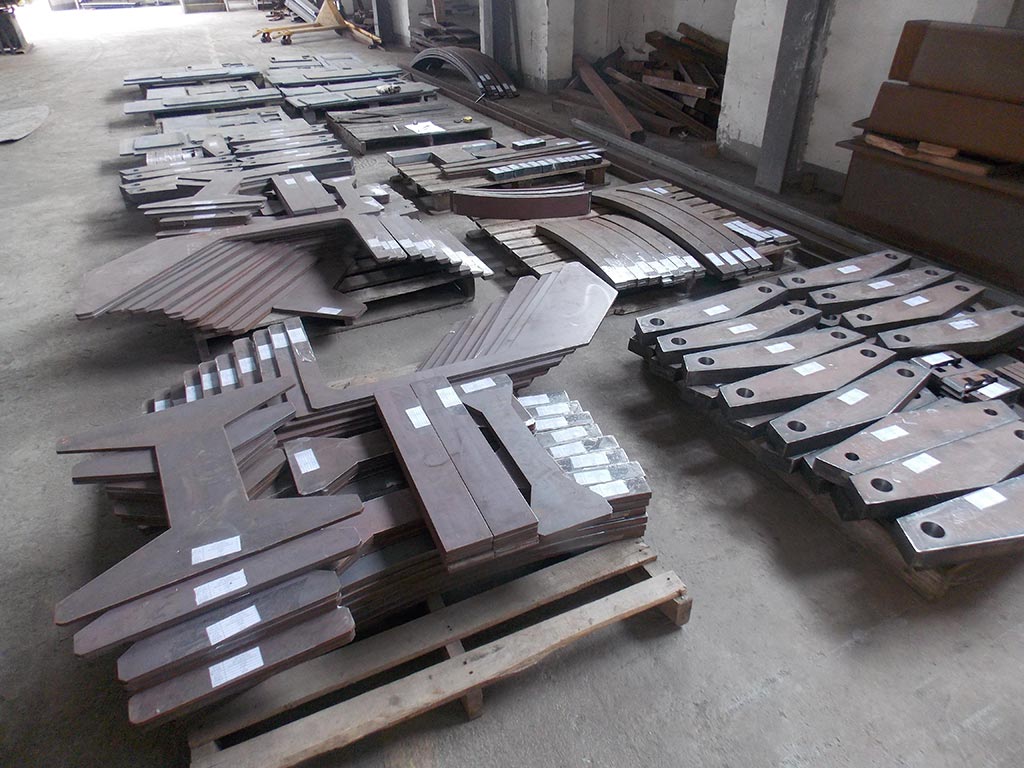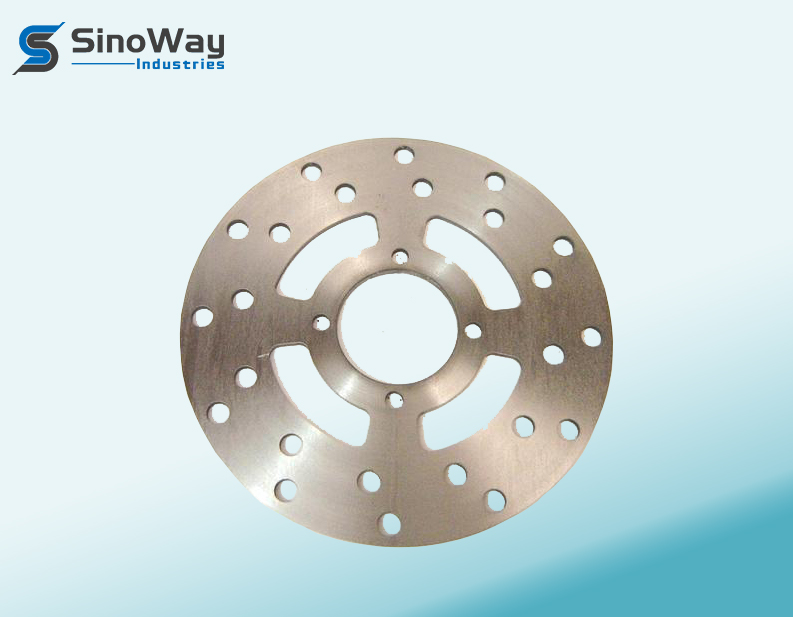Sheet Metal Laser Cutting Service
Sinoway offers CNC laser cutting services and custom sheet metal parts made through the laser cutting process
To meet our customers’ increasingly diversified production needs and enrich our sheet metal parts’ manufacturing lines, we added a new CNC laser cutting production facility in 2005. As a result, our sheet metal production can meet a broader range of customers’ needs, including the laser cutting service. We can produce orders for a wider variety of products in smaller quantities at a lower cost.
And our technical team includes rich-experienced engineers, who have been working with us from the factory established, and contains young guys with advanced technologies too. And the whole technical team has been equipped with modern mechanical fabrication designing software, Auto CAD, SolidWorks, Pro-E, UG, etc., to fulfill the currently more complicated products’ diverse requirements.
Simple introduction of the metal laser cutting process
1. What is a metal laser cutting process?
Laser cutting is a thermal cutting method that uses a focused high power density laser beam to irradiate the workpiece. And while the irradiated material rapidly melts, vaporizes, ablates, or reaches the ignition point, the molten material will be blown away with the high-speed airflow coaxial to the beam to achieve the purpose of cutting the workpiece apart.
Most laser cutting machines are CNC controlled or made into cutting robots. As a precision processing method, the laser cutting process can cut almost all materials, including thin metal sheets in two dimensions or three dimensions.
There are three main types of lasers used in laser cutting:
1.1 The CO2 laser is suited for cutting, boring, and engraving.
1.2 The neodymium(Nd) laser is used for boring, where high energy but low repetition are required.
1.3 The neodymium yttrium-aluminum-garnet (Nd: YAG) laser is used for boring and engraving, where very high power is needed.
Metal laser cutting process video
2. Suitable metal materials for the laser cutting process
A wide range of materials can be used in the laser cutting processes, and generally, we can divide them into two categories, including metals and non-metals. And we Sinoway specially supply services of the sheet-metal laser cutting process and custom products made by this process.

Usually, the most common metal we used for the laser cutting process include:
- Carbon steel sheets(usually used in the oxygen or nitrogen laser cutting)
- Stainless steel sheets(they are better to be used in nitrogen laser cutting to avoid oxidation)
- Aluminum alloy sheets(thickness below 6mm)
- Titanium sheets(often applied in the nitrogen or argon laser cutting)
- Copper and Brass sheets(thickness less than 2mm, copper for oxygen laser but brass for nitrogen laser cutting)
3. Different laser cutting methods
3.1 Laser vaporization cutting
With this process, the materials will get vaporized very fast under the high energy density laser beam heating. High power and power density are required for laser vaporization cutting. Laser vaporization cutting is mostly used for cutting thin metallic materials and non-metallic materials (such as paper, cloth, wood, plastic, and rubber).
3.2 Laser melting cutting
In the laser melting cutting process, the metal material is melted by laser heating. The melted metal liquid will be blown away by the non-oxidizing gas (Ar, He, N, etc.), sprayed out through the nozzle coaxial with the laser beam. Laser melting cutting does not require complete vaporization of the metal. It requires only 1/10 of the energy comparing to the vaporization cutting. Laser melting cutting is mainly used for cutting some materials that are not easy to oxidize or reactive metals, such as stainless steel, titanium, aluminum, and its alloys, etc.

3.3 Laser Oxygen Cutting
In laser oxygen cutting, the laser is a preheating source, and the active gas(oxygen) is acting as the cutting gas. On the one hand, the blown gas reacts with the cutting metal by oxidation, releasing a large amount of heat; on the other hand, the gas also blows the molten oxides and melts out away from the metal. Since the oxidation reaction generates a large amount of heat, the energy required for laser oxygen cutting is only 1/2 than melting cutting. The cutting speed is far greater than that for laser vaporization cutting and melting cutting. Laser oxygen cutting is mainly used for carbon steel, titanium steel, heat-treated steel, and other metal materials susceptible to oxidation.
3.4 Laser scribing and controlled cracking
Laser scribing uses high energy density laser to scan on brittle materials’ surface and run out a small groove. Then the brittle material will get cracked along the track under pressure. Controlled cracking uses the uneven temperature distribution generated when the laser scribes the groove to create thermal stress in the brittle material, causing the material to break along the track.
Unique advantages of Sinoway in metal parts production
After more than 20 years of practice, Sinoway has demonstrated its strengths in the sheet metal stamping and laser cutting services industry, excelling in the fierce industry competition. In addition to the necessary production conditions, several advantages that are unique to Sinoway include:
1. The combination of traditional production processes and modern high technology allows the manufacture of components with higher complexity;
2. A technical team that includes both hands-on production engineers from the workshop and professional design engineers from modern universities;
3. In addition to sheet metal stamping and laser cutting processing lines, Sinoway also has other metal parts manufacturing lines such as casting, forging, machining, and surface treatment to meet customers’ demands for one-stop service of complete products;
4. Sinoway has many metal material suppliers with whom we have cooperated for many years. They can supply quality metal sheets with different materials and thicknesses and under different national standards to ensure our quality consistency and production capacity.
Benefits of metal laser cutting processes
The general characteristics of laser cutting compared to other thermal cutting methods are fast cutting speed and high quality. We can summarize the details in the following aspects.
- Good quality cutting edges.
Due to the small laser spot, high energy density, and fast cutting speed, laser cutting can get quality cutting results.
- The laser cutting kerf is thin and narrow, the two sides of the cut are parallel and perpendicular to the surface, and the dimensional accuracy can reach ±0.05mm.
- The appearance after laser cutting is smooth. The roughness is only a few tens of microns, and even laser cutting can be used as the last process without further machining, which means we can use the metal parts directly after laser cutting.
- After laser cutting, the heat-affected area is small, and the properties of the material nearby are almost unaffected. So, the workpiece’s deformation is small, and the cutting accuracy is high. And the cut’s cross-sectional shape presents a more regular rectangle.
- High cutting efficiency
Due to the laser’s transmission characteristics, we usually equip the laser cutting machine with multiple CNC work platforms, and the entire cutting process can be fully CNC controlled. When operating, you can cut the parts in different shapes via CNC programs, two-dimensional cutting, and three-dimensional cutting.
- Fast cutting speed
With the 1200W laser’s power, the speed of cutting a 2mm thick mild steel plate can reach 600cm/min; and for cutting a 5mm thick polypropylene resin plate, the rate can achieve 1200cm/min. The materials do not need to be clamping fixed during laser cutting, saving the fixtures’ cost and additional loading and unloading time.
- Non-contact cutting
There is no contact between the cutting torch and the workpiece during laser cutting, so there is no tool wear. There is no need to change the “tool” to process different-shaped parts, but only the laser’s output parameters need to be changed. The laser cutting process is low noise, low vibration, and no pollution.
Applications of metal laser cutting products
Most laser cutting machines are CNC controlled or made into cutting robots. As a precision processing method, the laser cutting process can cut almost all materials, including thin metal sheets in two dimensions or three dimensions.
In automobile manufacturing, laser cutting technology for 3D spatial curves of small car roofs and windows is the primary option. Germany’s Volkswagen uses a laser with 500W to cut intricate thin body panels and various curved parts.
In the aerospace field, laser cutting technology is the preferred process to cut unique aerospace materials, such as titanium alloys, aluminum alloys, nickel alloys, chrome alloys, stainless steel, beryllium oxide, composite materials, plastics, ceramics, and quartz. The aerospace parts processed by laser cutting include engine flame barrel, titanium alloy thin-walled magazine, aircraft frame, titanium alloy skin, long wing truss, tailplane wall plate, main helicopter rotor, space shuttle ceramic heat insulation tile, etc.
Laser cutting and forming technology also have a wide range of applications in the field of non-metallic materials. It can cut high hardness, brittle materials, such as silicon nitride, ceramics, quartz, etc. It can also cut and process flexible materials, such as fabric, paper, plastic plates, rubber, etc. For example, laser for clothing cutting can save 10% to 12% of clothing materials and improve the efficiency of more than three times.

Quality control policy
Sinoway has established our quality management policy in strict accordance with the ISO 9001 standard. We require every step of the order execution process to be managed and controlled according to this policy to provide our customers with consistent quality products and services.

Our quality management policy includes the following aspects.
Inspection of raw material procurement and the quality;
First sample quality inspection;
Pre-production sample quality inspection;
Sampling inspection during the production process;
Quality inspection after mass production;
Packaging and transportation inspection;
All tests must have traceable inspection reports on file.
Win-Win Cooperation
With our specialty in metal parts production, we have been serving many customers engaged in different industries like Home Appliances, Construction, Automobiles, Heavy Equipment, etc.











